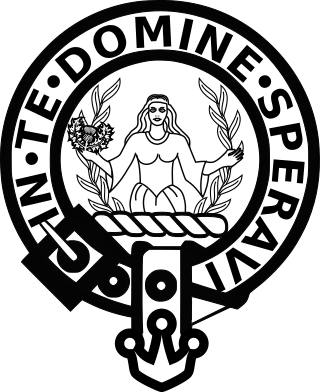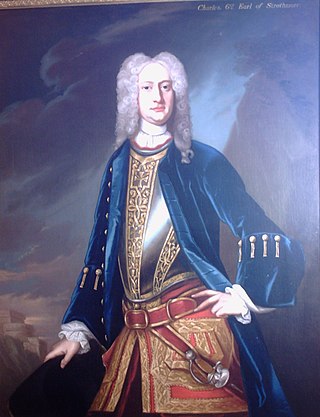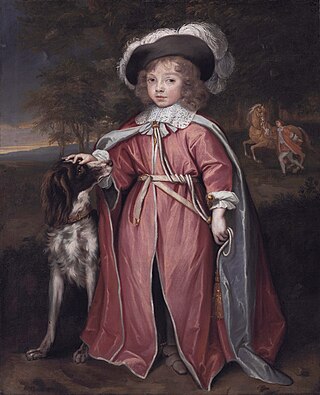
Glamis Castle is situated beside the village of Glamis in Angus, Scotland. It is the home of the Earl of Strathmore and Kinghorne, and is open to the public.
Jury nullification (US/UK), jury equity (UK), or a perverse verdict (UK) occurs when the jury in a criminal trial gives a not guilty verdict regardless of whether they believe a defendant has broken the law. The jury's reasons may include the belief that the law itself is unjust, that the prosecutor has misapplied the law in the defendant's case, that the punishment for breaking the law is too harsh, or general frustrations with the criminal justice system. Some juries have also refused to convict due to their own prejudices in favor of the defendant. Such verdicts are possible because a jury has an absolute right to return any verdict it chooses.

Earl of Strathmore and Kinghorne is a title in the Peerage of Scotland and the Peerage of the United Kingdom. It was first created as Earl of Kinghorne in the Peerage of Scotland in 1606 for Patrick Lyon. In 1677, the designation of the earldom changed to "Strathmore and Kinghorne". A second earldom was bestowed on the 14th Earl in the Peerage of the United Kingdom in 1937, leading to him being titled as the 14th and 1st Earl of Strathmore and Kinghorne.
Not proven is a verdict available to a court of law in Scotland. Under Scots law, a criminal trial may end in one of three verdicts, one of conviction ("guilty") and two of acquittal.

Clan Lyon is a Scottish clan.
Robert Dundas of Arniston, the elder, 2nd Lord Arniston (1685–1753) was a Scottish lawyer, and Tory politician who sat in the House of Commons from 1722 to 1737. In 1728 he reintroduced into Scottish juries the possible verdicts of guilty or not guilty as against proven or not proven. He was Lord President of the Court of Session from 1748 to 1753.
Thomas Lyon, 8th Earl of Strathmore was a Scottish nobleman, and Tory politician who sat in the House of Commons from 1734 to 1735, when he resigned upon succeeding to the peerage as Earl of Strathmore.

Charles Lyon, 6th Earl of Strathmore and Kinghorne was a Scottish peer and nobleman. He was the son of John Lyon, 4th Earl of Strathmore and Kinghorne. His exact date of birth is unknown but he was baptised on 12 July 1699.
Susan Lyon, Countess of Strathmore and Kinghorne was a Scottish noble. She was the daughter of John Cochrane, 4th Earl of Dundonald, wife of Charles Lyon, 6th Earl of Strathmore and Kinghorne, and "Scotland's fairest daughter", to quote a chronicler of the time. She married Charles Lyon, 6th Earl of Strathmore and Kinghorne, but he was killed in an unfortunate brawl at Forfar by Carnegie of Finhavon in May 1728, leaving no heir. The resulting trial is famous for establishing in Scots law the "not guilty" verdict. Later the Countess married her servant and was shunned by her family until she died in Paris leaving a daughter who was left penniless by her rich relatives.

Claude Bowes-Lyon, 13th Earl of Strathmore and Kinghorne, styled The Honourable Claude Bowes-Lyon from 1847 to 1865, was a British peer. He was the 13th holder of the Earldom of Strathmore and Kinghorne, the paternal grandfather of Queen Elizabeth The Queen Mother, a great-grandfather of Elizabeth II, and great-great-grandfather of Charles III.
Alexander Lindsay, 4th Earl of Crawford (1423–1453) was a late medieval Scottish nobleman, and a magnate of the north-east of that country.

Finavon Castle lies on the River South Esk, about a quarter of a mile south of Milton of Finavon village and five miles to the north-east of Forfar in Angus, Scotland. The name is applied both to a ruined 17th-century castle, as well as the 19th-century mansion house 130m to the west.
James Lyon, 7th Earl of Strathmore was a Scottish peer and freemason.

John Lyon, 4th Earl of Strathmore and Kinghorne was a Scottish nobleman and peer. He was the son of Patrick Lyon, 3rd Earl of Strathmore and Kinghorne. He married Elizabeth Stanhope on 21 September 1691 and was succeeded as Earl by his son John Lyon, 5th Earl of Strathmore and Kinghorne.
Charles Noel Carnegie, 10th Earl of Southesk JP DL, was a Scottish nobleman.

Philip Herbert, 7th Earl of Pembroke, 4th Earl of Montgomery KB was an English nobleman and politician who succeeded to the titles and estates of two earldoms on 8 July 1674 on the death of his brother William Herbert, 6th Earl of Pembroke.

Elizabeth Lyon, Countess of Strathmore and Kinghorne, was an English noblewoman and the wife of Scottish peer John Lyon, 4th Earl of Strathmore and Kinghorne. Born to Lady Elizabeth Butler and Philip Stanhope, 2nd Earl of Chesterfield, her paternity was in doubt. It is possible that her actual father was James, Duke of York, who would in 1685 ascend the throne as King James II of England.
Patrick Lyon of Auchterhouse was a Scottish politician.
James Carnegie of Finavon or Findhaven was a member of the Parliament of Scotland.
Thomas Lyon (1741-1796), was a Scottish politician who sat in the House of Commons between 1768 and 1778.








